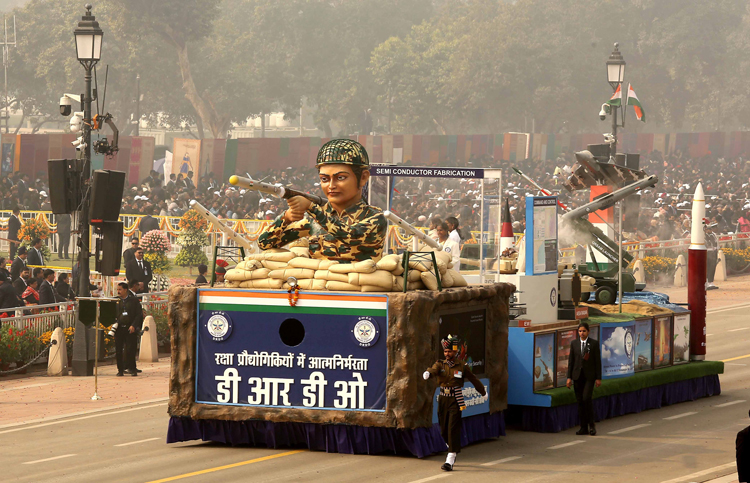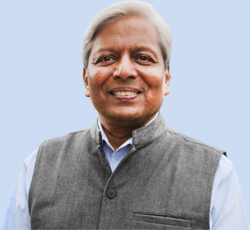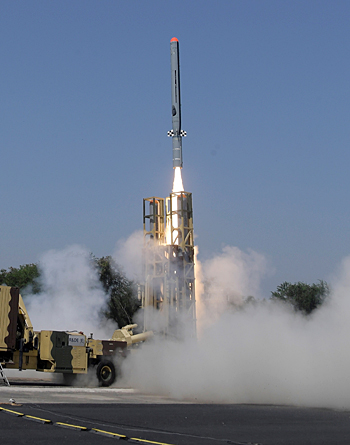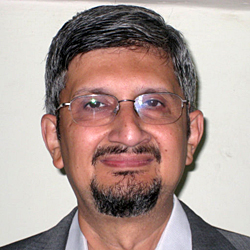INDIAN ARMED FORCES CHIEFS ON OUR RELENTLESS AND FOCUSED PUBLISHING EFFORTS

The insightful articles, inspiring narrations and analytical perspectives presented by the Editorial Team, establish an alluring connect with the reader. My compliments and best wishes to SP Guide Publications.

"Over the past 60 years, the growth of SP Guide Publications has mirrored the rising stature of Indian Navy. Its well-researched and informative magazines on Defence and Aerospace sector have served to shape an educated opinion of our military personnel, policy makers and the public alike. I wish SP's Publication team continued success, fair winds and following seas in all future endeavour!"

Since, its inception in 1964, SP Guide Publications has consistently demonstrated commitment to high-quality journalism in the aerospace and defence sectors, earning a well-deserved reputation as Asia's largest media house in this domain. I wish SP Guide Publications continued success in its pursuit of excellence.
DRDO Restructuring on Track
Transforming the DRDO into an efficient and agile R&D entity is vital for boosting India's defence manufacturing, increasing self-reliance, reducing imports, and achieving a defence export target of ₹35,000 crore by 2025
 |
The Author is Former Director General of Information Systems and A Special Forces Veteran, Indian Army |

It was reported in these columns on March 14 this year that the high-powered government-appointed nine member committee, headed by K. Vijay Raghavan, former Principal Scientific Advisor to the government, for restructuring the Defence Research and Development Organisation (DRDO), for developing high-end technologies for future warfare, had submitted its report to the government. The panel had submitted its report, 'Redefining Defence Research and Development', in early January 2024 but its implementation has been stuck because of reservations in the DRDO hierarchy; opposing some of the structural changes recommended.
The high-powered government-appointed committee, headed by K. Vijay Raghavan, submitted its report for restructuring the Defence Research and Development Organisation (DRDO) to develop high-end technologies for future warfare.

former Principal Scientific
Advisor to the Government
The DRDO operates some 52 labs with total strength of about 30,000 (some 5,000 scientists included) in addition to over 10,000 contractual employees attached to various labs. The organisation has been periodically criticised by the Comptroller and Auditor General (CAG) for delayed projects, cost overruns, sub-standard products and product costs higher than the same products available off-the-shelf in the open market.
DRDO's failures over the decades have contributed significantly to India becoming the world's biggest weapons importer. Between 2019 and 2023, India accounted for a significant 9.8 per cent of total global arms imports, reflecting a strategic vulnerability in its defence procurement. Recent data from the Stockholm International Peace Research Institute reveals a 4.7 per cent increase in India's arms imports between 2014-2018 and 2019-2023 - partially due to the 2020 Chinese invasion in eastern Ladakh during the latter period.
DRDO's failures have significantly contributed to India becoming the world's biggest weapons importer, with a 4.7 per cent increase in arms imports between 2014-2018 and 2019-2023.
Recommendations of the K. Vijay Raghavan Committee were somewhat similar to the structure of America's Defense Advanced Research Projects Agency (DARPA). Broad recommendations of the Committee are as under:

- Structure:
- Establish Defence Technology Council (DTC) headed by the Prime Minister, with Defence Minister and NSA as Vice Presidents;
- Create empowered committee under DTC, co-headed by CDS and PM's Principal Scientific Advisor;
- Separate posts for Secretary DRDO and Chairman DRDO; one heading DDSTI focused on science and research for defence equipment and technology;
- Create DTC Secretariat with 17 technology DGs (seven from DRDO, six from Armed Forces, two academics and two industry advisors. Also, hire technical officers with specific expertise for a 3-5 year stint;
- Define National Defence Technology Roadmap;
- Defence technology hubs in top academic institutions;
- Creating national champions &ndah; for large systems.
- Functional:
- Establish a Board under the head of DRDO, with CTO, a chief armed forces interface officer, a chief administrative officer and a CFO; to oversee reinvention of DRDO and be accountable for functioning;
- Create tech, admin and financial board to support the apex board.
- Manpower:
- rReduce the median age of DRDO to 35;
- hHire 100 graduates annually from campus;
- Energise DRDO's lateral entry programme.
- Laboratories:
- Restructure 41 DRDO labs into 10 national labs &ndah; in Delhi, Bengaluru (2), Hyderabad (2), Pune, Dehradun, Chennai, Vishakhapatnam and Chandigarh headed by directors and the units under them by research directors;
- Optimise utilisation and deployment of scientists;
- Increase lab interaction with outside world by creating green (can be accessed by outside researchers), amber and red zones;
- Streamline approval, purchase, appraisal process which are currently cumbersome.
- Research:
- DDSTI to focus on research in deep-tech areas;
- Focus on intelligence, surveillance and reconnaissance (ISR) technology, as well as in areas like life sciences;
- International collaboration.
The government gave the DRDO headquarters three months to assess, review and share feedback, if any, before implementing the panel's recommendations in a phased manner. The above-mentioned Board was created under the head of DRDO (comprising the CTO, Armed Forces Interface Officer, Chief Administrative Officer and CFO) to examine the complexities and give feedback to the government.
Recommendations include establishing a Defence Technology Council headed by the Prime Minister, creating national defence technology hubs, and restructuring 41 DRDO labs into 10 national labs.
Now news reports of May 22, 2024, have indicated that the Union Government has overruled opposition from defence scientists and is proceeding as per plan to implement the K. Vijay Raghavan Committee's recommendations. Earlier, the top hierarchy of the DRDO met Defence Minister Rajnath Singh to voice reservations against the recommendations of the nine-member K. Vijay Raghvan Committee. After the meeting with the defence minister, the DRDO followed it up with a detailed representation to the Prime Minister's Office (PMO). However, after multiple rounds of deliberations the government has brushed off the DRDO reservations, which is a good step, as restructuring of the DRDO was long overdue.

Under directions from the government, the DRDO headquarters has now set up an 'Overseeing Committee' to ensure review and implementation of the proposals, with a deadline set for August 31. The Overseeing Committee is headed by Dr Samir Kamat, Secretary-Department of Defence Research and Development and DRDO Chairman, plus two senior most Director Generals of the DRDO.
The Union Government has decided to implement the committee's recommendations despite opposition from defence scientists, setting an implementation deadline of August 31, overseen by an 'Overseeing Committee' led by Dr Samir Kamat.

Secretary, Department of Defence
R&D and Chairman, DRDO
Dr Samir Kamat has reportedly constituted 13 separate committees, headed by DRDO Director Generals, to implement the recommendations of the 'Defence Review Committee'. For any specific recommendation that cannot be fully implemented by the August 31 deadline, milestones achievable by that date are to be specified by the 'Overseeing Committee along with an overall timeline for completion. The first meeting of the Overseeing Committee is expected to be held shortly, wherein a roadmap will be presented for completing the process by August 31.
Transforming the DRDO into an efficient and agile R&D entity with a faster turnover of cutting-edge technology and projects is vital looking at the threats to India's national security, need to boost defence manufacturing, increase self-reliance, reduce imports and give a fillip to defence exports, for which an ambitious target of ₹35,000 crore by 2025 has been set. The crux of the reforms, however, will require cutting the flab, streamlining the command and control with adequate oversight, and above all changing the work culture required for efficient functioning.





